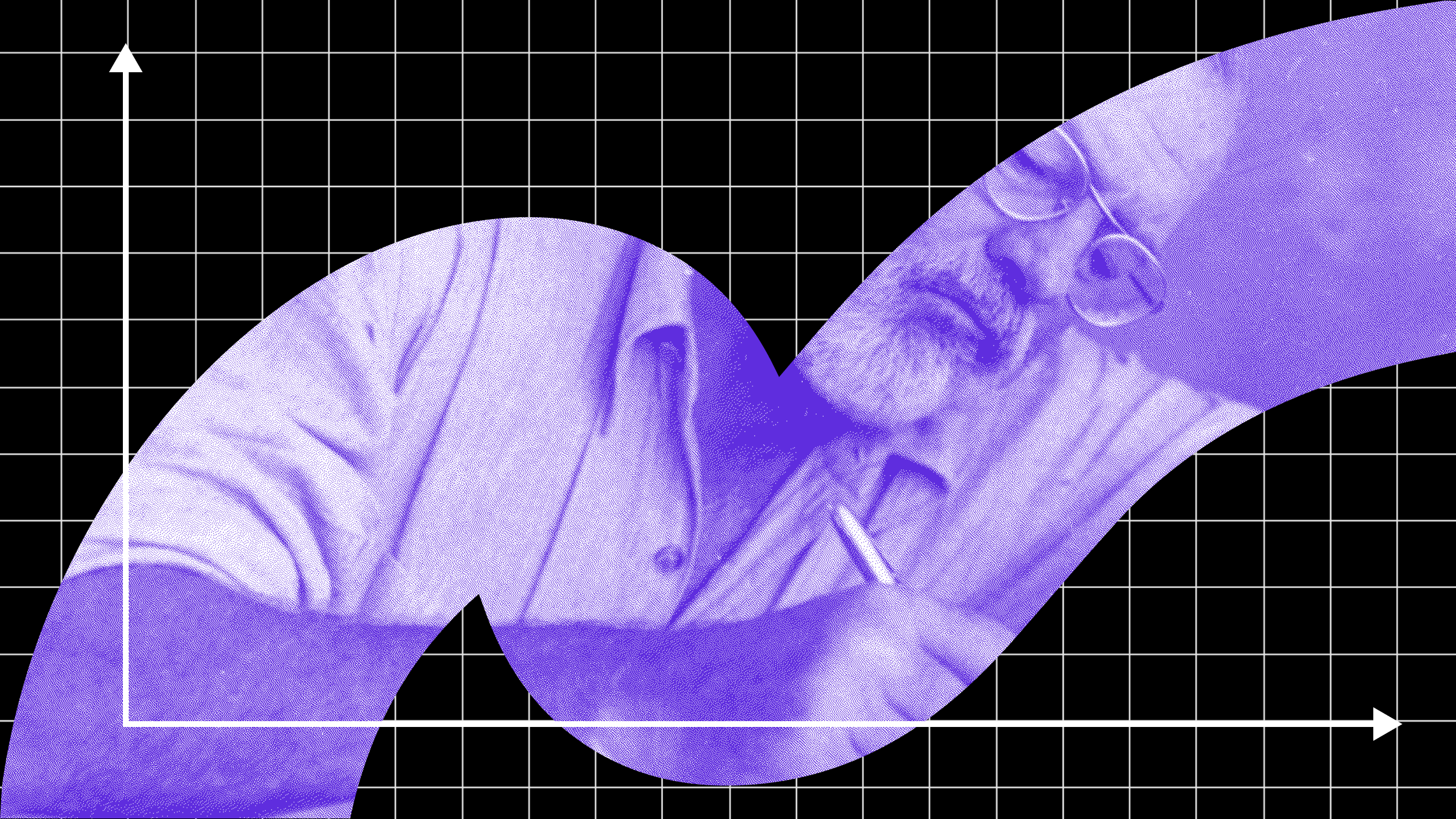5 ways to escape “survival mode” and reduce stress at work

- Stress at work can push our nervous systems into “survival mode,” leading to a perpetual feeling of being overwhelmed.
- Techniques for switching off survival mode can easily be woven into our daily routines.
- These strategies include “4×4 breathing,” visualization, and avoidance of schedule compression.
Stress at work is something we’ve all experienced, but when it becomes a constant, unrelenting presence, it can push our nervous systems into what’s known as “survival mode.” This state is characterized by heightened anxiety, decreased focus, and a perpetual feeling of being overwhelmed. Left unchecked it can lead to decreased productivity, burnout, and even physical health issues. The good news is that there are practical, straightforward steps you can take to break free from survival mode and bring your stress levels back under control.
The techniques and strategies shared below draw from a deep understanding of how our nervous system works and are designed to be simple enough to incorporate into your daily routine. Whether you’re dealing with a particularly stressful period at work or looking to build resilience for the long term, these strategies can help you move out of survival mode and into a state of calm, focused productivity.
#1. Practice 4×4 breathing
One of the quickest and most effective ways to calm your nervous system is through controlled breathing. The 4×4 breathing technique is a simple method you can use anytime, anywhere to bring your body out of a stress response and back to a state of balance.
To practice this, inhale deeply through your nose for a count of four, hold your breath for a count of four, exhale slowly through your mouth for a count of four, and then hold your breath again for a count of four. Repeat this cycle four times. This technique works by activating the parasympathetic nervous system, which is responsible for relaxation and recovery. When you’re stressed, your body is likely in a version of “fight, flight or freeze,” which can result in poor breathing patterns. The 4×4 technique counteracts this by slowing down your breath and creating a rhythm that signals to your brain that you’re safe, allowing your body to relax.
This practice can be used in all sorts of situations. It can be effective in helping to calm anxiety before a meeting or presentation or help you regain your focus when you find yourself procrastinating.

#2. Take strategic movement breaks
Sitting for long periods can exacerbate stress and keep your body in survival mode. We were meant to resolve stressful situations by moving (like running away from a saber tooth tiger) not by staying stuck in a chair typing. Regular movement is essential for keeping your nervous system regulated and your stress levels in check. Instead of waiting until the end of the day to move, take short, strategic movement breaks every hour.
Here are three exercises that discharge and soothe the nervous system that you can try:
- Stomping: Stand up and stomp your feet firmly on the ground for 30 seconds. This exercise helps discharge pent-up energy and tension from your body, grounding you in the present moment. It’s particularly effective when you’re feeling agitated or restless.
- Tapping: Use your fingertips to slap rhythmically along your body, starting from your chest, working out to your arms, then from your abdomen down your legs. Pay extra attention to areas where you feel tension, like your shoulders or back. Tapping stimulates circulation and helps release stress held in the muscles, bringing your body back to a state of balance.
- Walking meetings: Zoom and other video conferencing-based meetings have become standard since the pandemic, but they don’t have to be. Whenever practical, take your meetings by phone (or in person) and walk while conducting them.
These movement breaks help to release built-up tension in your muscles, improve circulation, and give your mind a chance to reset. By making movement a part of your day, you can keep stress levels in check and maintain a balanced state throughout your workday.
#3. Use visualization to transition between tasks
Transitioning from one task to another without a mental break can keep your nervous system on high alert, perpetuating stress. Visualization is a simple yet powerful tool that can help you mentally and physically reset between tasks.
Here’s how to practice it. Before starting a new task, close your eyes and take a deep breath. Visualize a peaceful place — this could be a beach, a forest, or any place where you feel calm and relaxed. Imagine yourself in this place, paying close attention to what you can see, smell, hear, and feel as if you were really there. Maintain your visualization and attention on the sensory experience and notice your body respond in a positive way. Stay with this positive experience for approximately 60 seconds.
This brief mental break helps your brain transition from one state to another, allowing you to let go of any residual stress from the previous task. Visualization can be particularly effective when you’re moving from a high-stress activity to something that requires focus and creativity. By giving your mind a moment to reset, you’ll find it easier to approach the next task with a calm and clear mindset.
#4. Defend your time and avoid schedule compression
Stress turns into survival mode when we feel overwhelmed, often because we’re trying to do too much at once. While it’s true that you have a lot on your plate, the belief that it all needs to be done simultaneously or under unrealistic deadlines is not only often untrue but also negotiable. Setting realistic timelines with yourself and your colleagues is critical to managing stress.
Another key strategy is to avoid compressing your schedule. Don’t pack back-to-back meetings or commitments into your calendar. Instead, give yourself at least 15 minutes between events. This buffer time allows you to consciously pivot rather than reactively scramble from one task to the next. Use this time to do any of the previous techniques, review your notes, or simply decompress before jumping into the next item on your agenda.
By defending your time in this way, you create a more manageable flow to your day, reducing the sense of being overwhelmed and helping you stay in control. This practice not only reduces stress but also enhances your ability to perform at your best throughout the day.
#5. Optimize OOO time for recovery and set clear boundaries with technology
Since work is unavoidably stressful, we need to do everything we can to shift out of “productivity mode” when not at work (i.e evenings, mornings, weekends, vacations). Nowadays, the biggest obstacles to making the best of our downtime are our phones. Constant connectivity can keep your nervous system in a perpetual state of stress. Setting clear boundaries with technology is crucial for reducing stress and preventing burnout.
Some tried-and-true approaches include batching, turning off push notifications, taking phone-less lunches, and setting up “tech-free” windows:
- Batching is the practice of scheduling specific times to check emails and messages, rather than responding immediately to every notification.
- Turning off push notifications is no-brainer. Most of us already reach for our phone often enough when its not calling out attention with a “ding.” By turning off all non-essential notifications, we can insulate ourselves from excessive distractions.
- Take your lunch break without your phone. Use this time to eat mindfully, take a walk, or simply relax without the constant pull of technology.
- Finally, set “tech-free” time both at the end of and before your workday, allowing at least an hour after waking, and before bed, without screens.
Work is inherently stressful, but non-work time should not be. It’s essential to maximize your pre- and post-work times for relaxation and recovery, and a huge part of that is staying away from tech and the addiction to keep engaging. These boundaries help you reclaim control over your time and attention, which can significantly reduce work-related stress. When you’re not constantly reacting to notifications, you give your nervous system a chance to shift out of survival mode and truly recover. This practice not only reduces stress but also improves your overall productivity and well-being.





